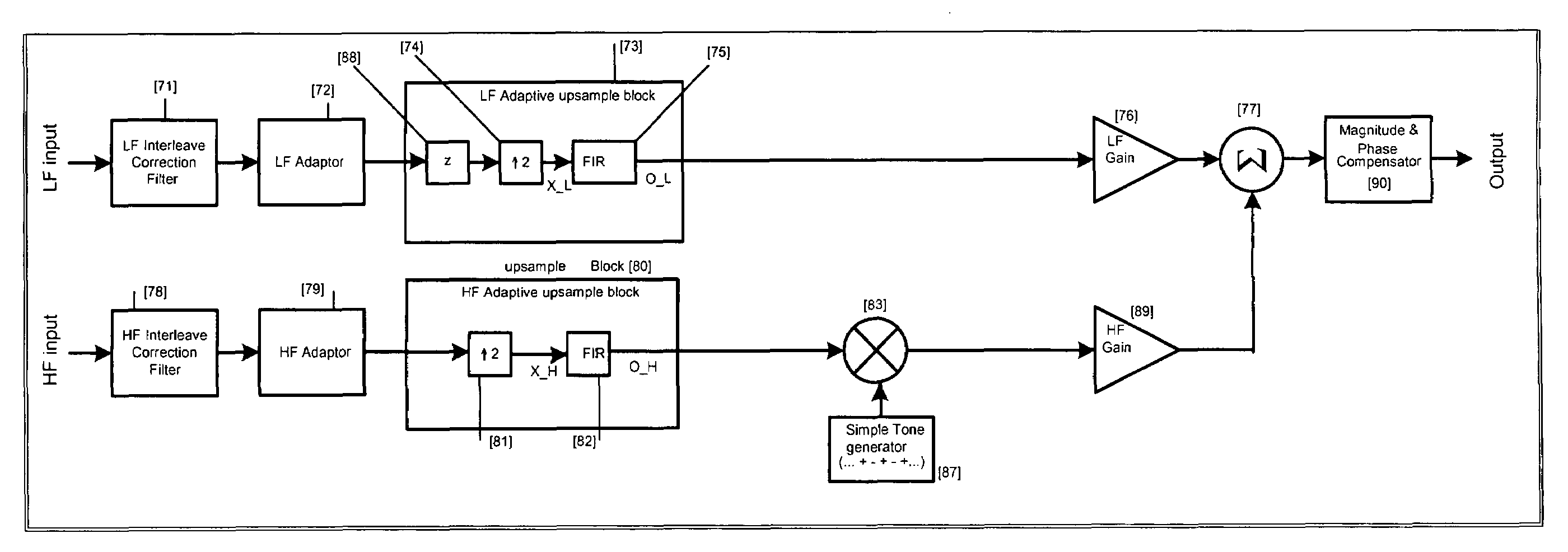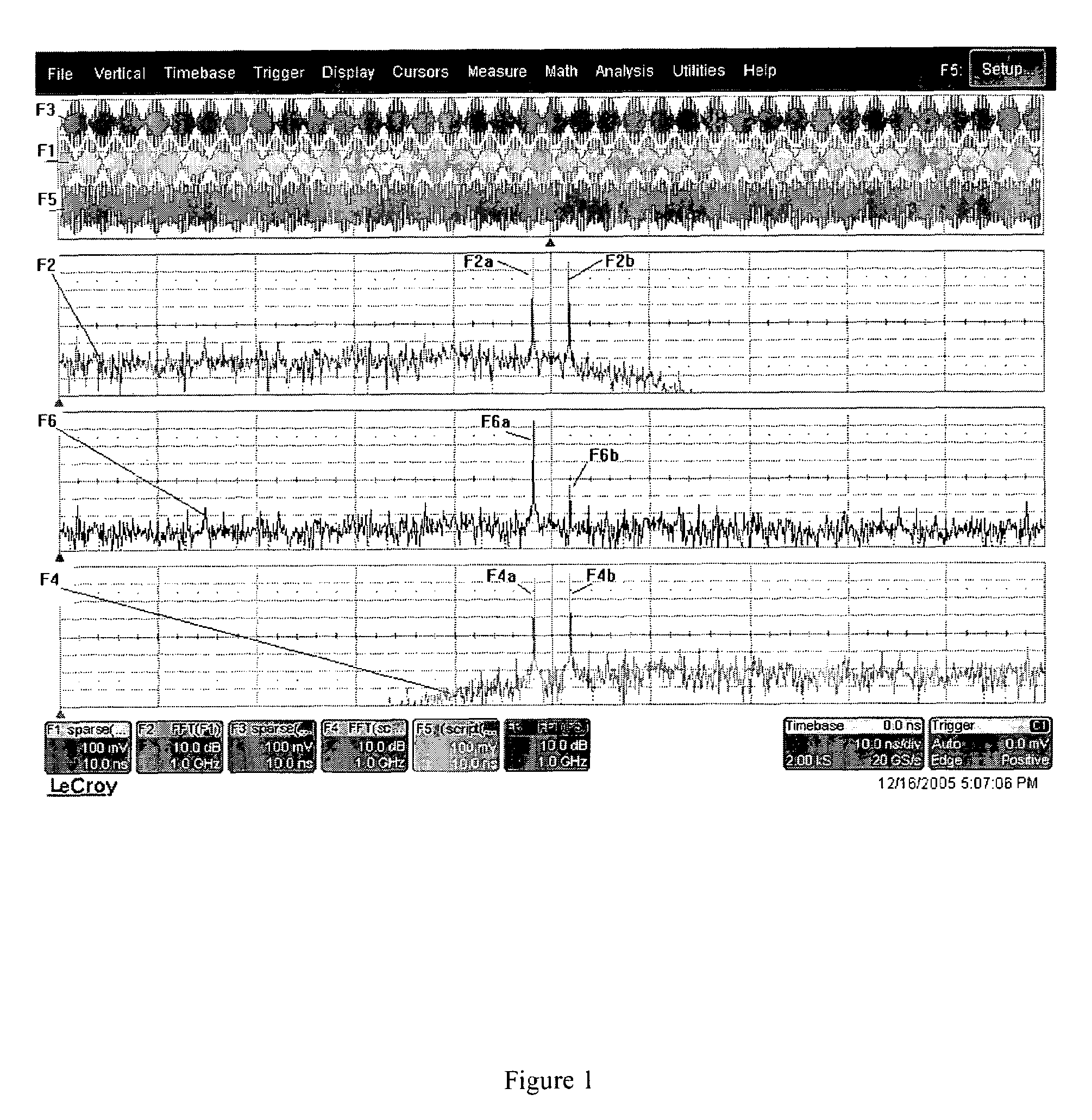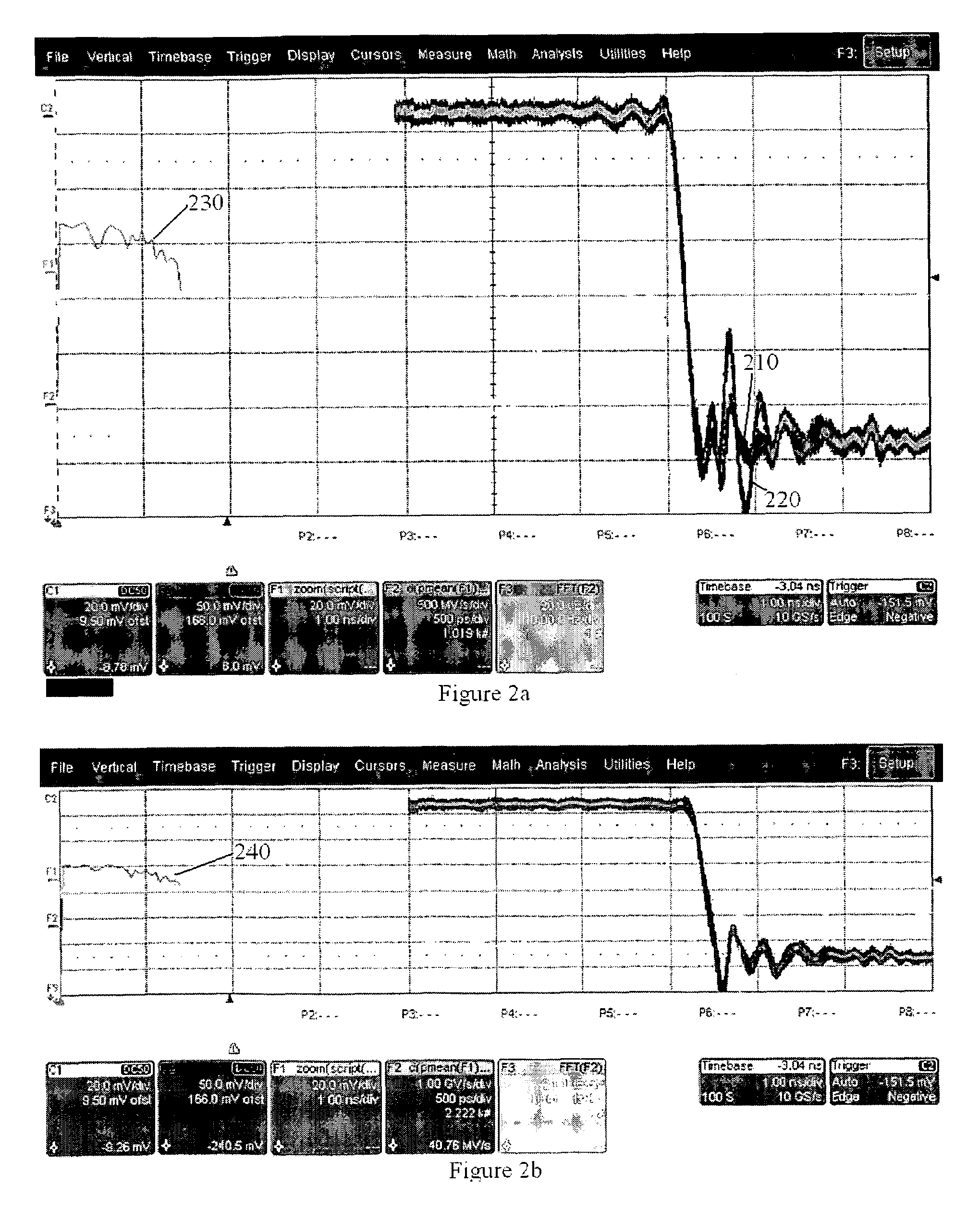Adaptive interpolation for use in reducing signal spurs
a technology of adaptive interpolation and signal spurs, applied in the field of real-time oscilloscopes, can solve the problems of truncated sinc filter failing to reject an undesired frequency, affecting the use of the maximum theoretical available bandwidth,
- Summary
- Abstract
- Description
- Claims
- Application Information
AI Technical Summary
Benefits of technology
Problems solved by technology
Method used
Image
Examples
Embodiment Construction
[0035]The invention will now be described making reference to the accompanying drawings.
[0036]FIG. 1 depicts the functional results of the invention when applied to a DBI equipped oscilloscope. As is shown in FIG. 1, a signal F1 is received by the oscilloscope. Signal F1, of a frequency just below the Nyquist limit, is depicted as being received on a time domain scale for the horizontal axis. When this signal is acquired by a LF channel (see element 32 of FIG. 10 below), upsampled (see block 73 of FIG. 11 below) and fast-fourier transformed (FFT) into the frequency domain along the horizontal, a frequency spectrum F2 results. Note in F2, not only is a first peak F2a generated, a second, undesirable peak F2b is generated from the aforementioned interpolation near the Nyquist limit. Similarly, when the same input signal passes through the mixing and amplifying elements 33-45 and 50-52 of FIG. 10 below, a signal is acquired by a HF channel (see element 63 of FIG. 10 below), upsampled (...
PUM
 Login to View More
Login to View More Abstract
Description
Claims
Application Information
 Login to View More
Login to View More - R&D
- Intellectual Property
- Life Sciences
- Materials
- Tech Scout
- Unparalleled Data Quality
- Higher Quality Content
- 60% Fewer Hallucinations
Browse by: Latest US Patents, China's latest patents, Technical Efficacy Thesaurus, Application Domain, Technology Topic, Popular Technical Reports.
© 2025 PatSnap. All rights reserved.Legal|Privacy policy|Modern Slavery Act Transparency Statement|Sitemap|About US| Contact US: help@patsnap.com



